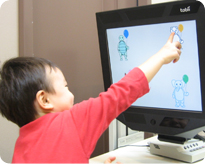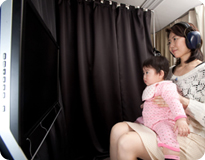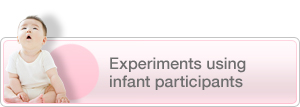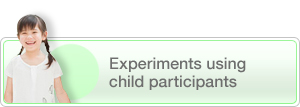By measuring where on a screen babies are looking as they listen to sounds or view images, we can study how babies understand language.
※ This procedure is not a test of individual ability.

We use an eye-tracking device, similar to a standard computer monitor, to determine where babies are looking at a given moment. The bottom of the device emits near-infrared light, which is reflected from the baby's eyes and measured by a detector. These measurements are then used to calculate the direction of the baby's gaze.

Near-infrared light has a wavelength close to that of visible light, and is similar to that used in TV remote controls and kotatsu. The light used in this procedure is weaker than normal sunlight, and has no harmful effects. In addition, with this procedure there is no need for any head-mounted equipment.
During the procedure, the baby sits on the mother's lap and watches the monitor. While viewing various pictures and animations, the baby will hear a number of sounds and words. Observing the baby's gaze allows us to learn the extent to which babies understand the words being spoken around them.












